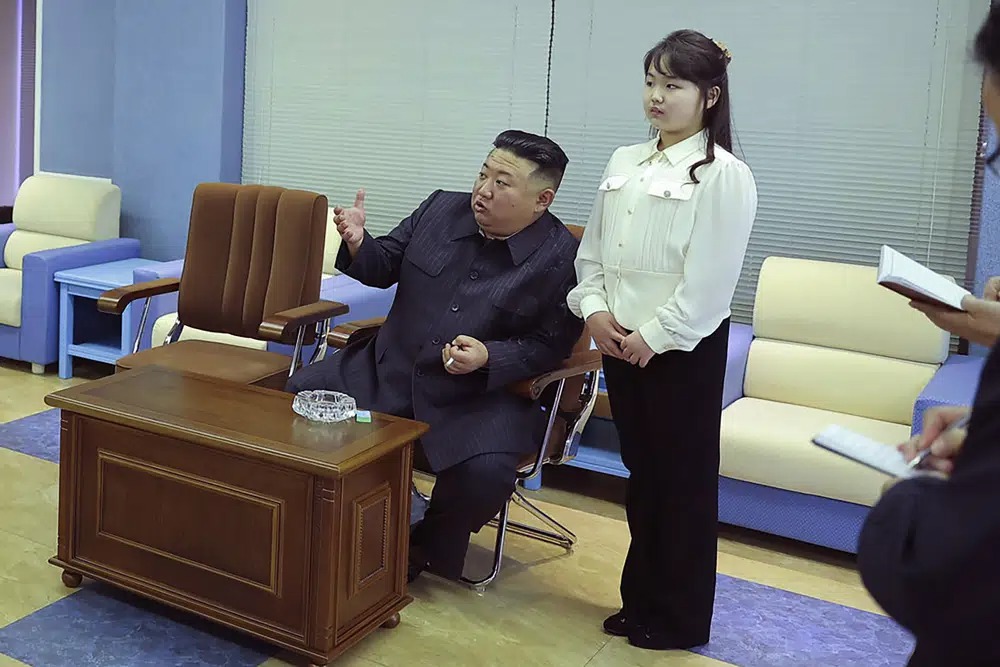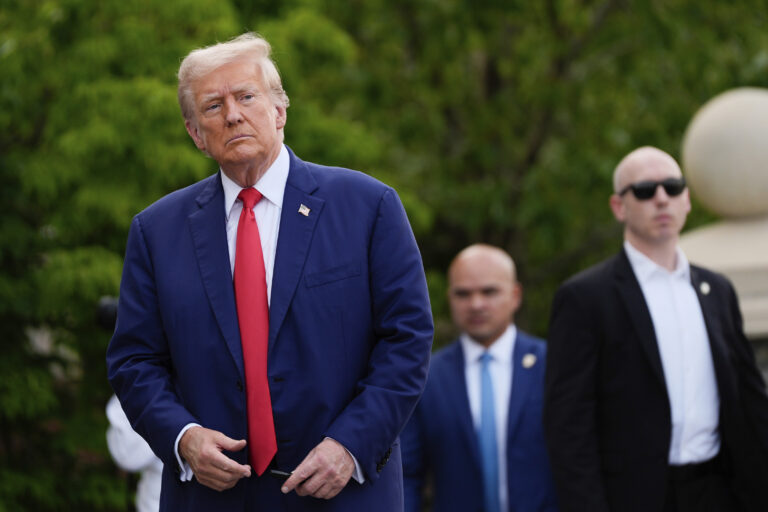North Korean leader Kim Jong Un said his country has completed the development of its first military spy satellite and ordered officials to go ahead with its launch as planned, state media reported Wednesday.
During his visit to the North’s aerospace agency Tuesday, Kim stressed it’s crucial to acquire a space-based surveillance system to cope with what he called serious security threats posed by “the most hostile rhetoric and explicit action” by the United States and South Korea this year, the Korean Central News Agency said.
North Korea has said its ongoing torrid run of weapons tests, including its first test-launch of a solid-fueled intercontinental ballistic missile designed to strike the U.S. mainland last week, are a response to joint military exercises between the United States and its regional allies South Korea and Japan.
At the National Aerospace Development Administration, Kim said military reconnaissance was essential for North Korea to effectively use its methods of war deterrence, according to KCNA.
Kim said “the military reconnaissance satellite No. 1” had been built as of April and ordered efforts to speed up final preparations for its launch at a planned date that he didn’t disclose. He said North Korea must launch several satellites to firmly establish an intelligence-gathering capability, KCNA said.
Kim also accused the U.S. and South Korea of expanding their hostile military campaigns in the name of bolstering their alliance. He accused the U.S. of transforming South Korea into “an advanced base for aggression” by deploying strategic assets like aircraft carriers and nuclear-capable bombers.
The U.S. and South Korean militaries have been expanding their combined drills to beef up their deterrence against North Korea’s growing nuclear threats. This week, the allies launched a 12-day aerial exercise involving some 110 warplanes and staged a one-day naval missile defense exercise with Japan.
North Korea, for its part, has carried out about 100 missile tests since the start of last year, about 30 of them this year. Observers say while North Korea protests the U.S.-South Korean drills, it also uses them as a pretext to advance its own military capabilities that it believes would help it apply more pressure on Washington to make greater concessions such as the relaxing of sanctions.
A spy satellite is among an array of high-tech weapons Kim has been developing. The others are a solid-propellant ICBM, a nuclear-power submarine, a hypersonic missile and a multi-warhead missile. North Korea has conducted tests of such weapons, but it is not clear how close they are to operational.
North Korea’s previous missile and rocket tests have demonstrated the country has a capacity to send satellites into space. But many experts question whether North Korea has sophisticated cameras to use on a spy satellite, because photos it has released from previous test launches were low-resolution imagery.
When North Korea launched a test satellite to assess its photography and data transmission systems last December, it publicized black-and-white photos showing a space view of South Korean cities. Some civilian experts in South Korea said at the time the photos were too crude for a surveillance purpose and that they were likely capable of only recognizing big targets like warships at sea or military installations on the ground.
Kim’s sister and senior North Korean official, Kim Yo Jong, quickly dismissed such an assessment, saying the test satellite carried a commercial camera because there was no reason to use an expensive, high-resolution camera for a single-shot test.
Kim Jong Un said one of the objectives for its spy satellite is acquiring an ability to “use pre-emptive military force when the situation demands.” That shows he intends to link the spy satellite to the North’s escalatory nuclear doctrine, which authorizes pre-emptive nuclear strikes.
Tuesday’s KCNA dispatch focused on U.S. military assets that have been deployed in South Korea in recent months but made no mention of possible targets in the mainland U.S. That could imply that North Korea may intend to use its reconnaissance satellites to identify and then attack key targets in South Korea, including U.S. military bases, with its short-range missiles.
Kim Dong-yub, a professor at the University of North Korean Studies in Seoul, said North Korea is communicating that its military reconnaissance satellites would be intended to acquire precise location and movement information in real time so that its missiles and other nuclear-armed weapons could accurately strike targets. He said North Korea will likely inform international maritime and telecommunication authorities of its specific launch plans, likely sometime between May and September.
Putting a reconnaissance satellite into orbit would require a long-range rocket. But the U.N. bans such a launch by North Korea because it views it as a cover for testing its long-range ballistic missile technology.
North Korea placed its first and second Earth observation satellites into orbit in 2012 and 2016, but foreign experts say neither one transmitted any imagery back to North Korea. U.N. sanctions were issued over those launches.
North Korea has avoided fresh U.N. sanctions for its recent ballistic missile tests in 2022 and this year because the U.N. Security Council permanent members Russia and China won’t support U.S. and and others’ attempts to toughen sanctions on it.
(AP)











